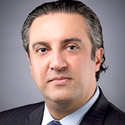10:03 AM
Can Technology Help Prevent the Next Financial Crisis?
Regulators and some market participants in the financial services and banking industry have often overlooked the strategic role of technology. Over the past decade, while many sectors, industries and government agencies began to utilize hardware and software as strategic tools, the same could not be said about the financial services industry as a whole. In fact, the regulatory regime of the banks and markets continues to suffer from a lack of funds dedicated to technological innovation. As recently as January 2014, Congress cut the budget of the SEC dedicated to technology by half.

This author suggests that the financial services sector and the federal government can collaboratively view technology as a means to effectively, efficiently, cheaply and rapidly implement the regulatory structure proposed in the wake of the 2008 global financial crisis. Furthermore, they can do so in a manner that would help reduce the risk of another systemic crisis. Technology, in other words, can serve as the canary in the coal mine: a tool to warn both industry and regulators of the possibility of another systemic crisis. This is not science fiction fantasy, as analytics have matured to a level where they can accomplish this task.
In order to appreciate this potential opportunity, it is important to recognize the role that technology can play in financial regulation. The SEC has some 4,000 employees and is tasked with regulating the stock markets, which have a capitalization of roughly $17 Trillion. The CFTC, with fewer than 700 employees, is tasked with regulating the derivatives market with over 65,000 registrants. The other regulatory agencies overseeing banking and financial services face similarly daunting staff-to-market size ratios. It could be argued that market size is not an optimal metric by which the effectiveness of a regulator can be measured. However, other metrics, such as transaction volume, global proliferation of capital or bank assets, all paint a similar portrait. This is where technology can help both markets and the regulators.
The SEC itself has recently begun the use of a system that allows for the streaming of real time market data, enabling the agency to better monitor the markets. SEC Chair Mary Jo White said last fall that “Much of the current discussion around market structure seems rooted more in anecdote — and, at times, self interest — than in evidence.” She added “If we want to make good decisions about markets, empirical evidence provides, at the very least, a starting point for a principled dialogue.” Many would view such close market monitoring as over-regulation. That need not be the case. From quantitative trading to electronic wire transfers, technology has been a part of the financial services industry for decades. The newest stride, which can serve as the foundation for cooperative technology adoption between market participants and regulators, is the widespread implementation of big data projects and awareness of analytics. Big data and analytics are new terms for solutions to a long-standing challenge: separating signal from the noise. The problem is simple: how can any one individual or entity, in the face of a torrent of data, consisting of – at times – millions of pieces of information, glean the valuable insight necessary to make impactful decisions rooted in sound judgment?
[Budgets and technology specifications are only part of an technology leader's responsibilities. Managing an IT workforce might be the most challenging aspect of any executive's job. Attend the Humans Aren’t Computers: Effective Management Strategies for IT Leaders session at Interop 2014 in Las Vegas, March 31-April 4 to learn new management techniques.
You can also REGISTER FOR INTEROP HERE.]
The solution is conceptually simple, but difficult to put into action: the implementation of a uniform technological standard that gathers, stores and analyzes all market data for the financial services industry, and disseminates the data, along with analysis, to the relevant parties. The objections are typical of problems faced by any technology today: security, availability, scalability and the question of whether such a project can deliver on its promise. However, these concerns need not stop an approach that could serve both industry and regulators. In fact, the Office of Financial Research, housed in the Financial Stability Oversight Counsel, has a similar mandate.
The primary benefit of such a cooperative perspective is to allow regulators a better field of vision that will help them in preventing or mitigating future financial crises. The main issue with large financial crises is their systemic nature; no single industry actor can have enough information at its disposal to be able to raise an alarm in a timely manner, so as to prevent the depth and breadth of a systemic crisis such as the one that occurred in 2008. Some may argue that such events are rare and cannot be predicted. Such a perspective is rooted in a view of the markets as completely efficient mechanisms that experience rare and unforeseen disturbances. This approach does not take into account the fundamental fact that with comprehensive access to data, and using proper analytics, one can, in fact, observe systemic problems unfolding in a timely enough manner to allow all market participants to develop a plan that would – at least – minimize the damage.
Such cooperation can also serve as a model that would enable the financial services industry and regulators to move past the burgeoning adversarial relationship over the issue of regulation. Technology can act as a buffer and reduce the need for more regulation. In the end, it seems that lines of code and data can help prevent more lines in the federal register.
Behzad Gohari is an attorney, entrepreneur and investor and currently serves as managing director at The Althing Group
Behzad Gohari is a Managing Director at The Althing Group, an advisory firm helping clients navigate the capital markets. Over two decades, and through a dozen startups, he has acted as founder, investor, and strategic advisor, as well as utilizing his ... View Full Bio



















